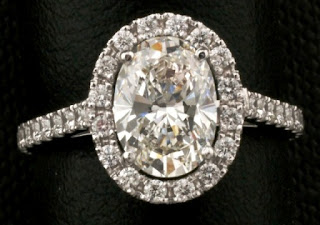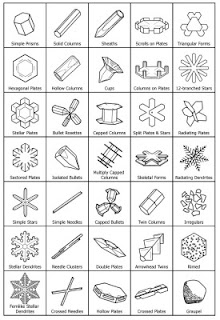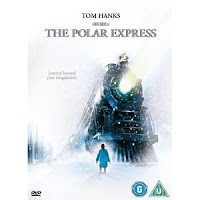Dictionary Definition: Jewel
n
1.a. A precious stone: a gem
b. A small or natural artificial gem used as a bearing in a watch
2. A costly ornament of precious metal or gems
3. One that is treasured or esteemed
4. (Clothing, personal Arts and Crafts / Jewellery) A piece of jewellery
5. (Fine Arts and Visual Arts / Ceramics) An ornamental glass boss, sometimes faceted, used in stained glasswork.
vb
-els, -elling, -elled US, -els, -eling, -eled
(tr) to fit or decorate with a jewel or jewels
Modern Day Jewels
The subject of Jewels is a very diverse one with many different meanings. It may refer to Gemstones or Jewellery, films and books going by this name (which coincidentally links it to my other topic of research - Theatre), Jewel bearings used in sensitive measuring equipment, jewel case which is the case that CDs and DVDs are held in, Jewel Beetles, Jewel Butterflies and Jewel Damselflies to be some examples of the various meanings of the word. Of course, the most common use of the word is in the description of gemstones and jewellery. (Enchanted Learning 2010)
 |
| Examples of different Gemstones (Alfonso 2007) |
(Even though this CD is from 2002, it is still being sold on amazon.co.uk today, therefore making it viable for my present day research because there is still an interest in the media)
 |
|
[Blu-ray] [2011]
|
 |
 |
A gemstone is also called a semi-precious, or precious stone. It is a piece of mineral which is used to make jewellery and adornments once it has been cut and polished. There are other non-minerals that are also used for gemstones such as lapis lazuli, amber and jet, but considering that they are used for jewellery too they are also considered gemstones. The stones are very valuable, and the value increases with the rarity of the gem. Often in society it is a major status symbol to be adorned with the most expensive and rare gemstones because only the richest people can afford them. Poorer people may only own one bespoke piece of jewellery that they received at an important event in their lives, such as a marriage or landmark birthday. (Enchanted Learning 2010) (Victoria and Albert Museum 2010)
 |
After looking at gemstones the subject of the way status coincides with the value of the gems interests me. The first thought that came to me was to study diamonds because they are the ultimate status symbol in today’s society. Rich people buy them in their hundreds, poorer people can only dream of getting a real diamond on an engagement ring. This is due to their scarcity and the trouble that 3rd world people go to mine them out of the ground in dangerous conditions.
Diamonds
Naturally after the study of gemstones, this seems like the most appropriate topic because diamonds are the most expensive of all the gemstones. Most of its value comes from the rarity of the gemstone, but also because it is so hard. The hardness increases the optical clarity with makes it ‘sparkle’ more when cut, and it also means that few impurities will be found within the diamond itself. (Jewelry Central 2011)
 |
| A diamond ring, surrounded by smaller diamonds (Designs by Indigo 2010) |
 |
| Dispersion in a Diamond (Jewellery Central 2011) |
 |
| Structure of a Diamond (Jewellery Central 2011) |
This is a trailer for the film 'Blood Diamond' in 2006.
Diamonds are huge in the news world, with drama surrounding the cartels in Africa, ‘Blood Diamonds’ and the sheer value and scarcity of the gemstones. I feel that diamonds are an incredibly relevant subject for state of the art media because people in the present day place much value on obtaining diamonds, and if they do they take care to show it off to people they know. Other people covet diamonds, even going as far as to steal them – in the knowledge that they will bring large sums of money at sale. Diamonds have a great power in the modern day world, blood diamonds are even used as bribes and ‘favours’ from diplomats whose countries are rich in diamonds. In 2010 the model Naomi Campbell attended a war crime tribunal at the Hague accused of accepting ‘blood diamonds’, and this was very thoroughly reported in the news at the time. (Taken from ‘Naomi Campbell's 'blood diamond' testimony at war crimes trial: live updates’ – The Guardian, Matthew Weaver 5thAugust 2010)
The Subject of Cameos
Cameos can be made from anything and everything; Hand carved shell, agate, ultrasonically carved agate, poured “agate”, coral, mother of pearl, turquoise, moulded resin, glass or painted porcelain. However, the most popular of cameos are made from shell or blue/black agate. (Espy Jewellery 2010) It is a method of carving an object such as an item of jewellery, which is the most popular form of cameo.
In modern day times they are no longer hand carved; instead they are carved with an ultrasonic mill. Occasionally an artist will also hand work a cameo to produce a portrait of someone from a photograph. (Epsy 2010)
 |
| Cameo of Sardinian conch, Ascione e Antonio Mennella (Bellezzedinapoli 2011) |
It seems as though cameos are very popular with consumers at the moment. Currently there are many shops set up online to sell these such as shops on Etsy (a website which allows people to set up their own ‘mini shop’), eBay and Amazon. There are also many websites dedicated to the making of cameos for jewellery makers, and they are increasing being seen in high street shops and in fashion.(Cameo Vintage 2011)
 |
 |
| A cameo toy for young girls - it is a very popular format for jewellery (Hello Kitty 2011) |
 |
 |
A video to show how to make a cameo - people are still making them as a hobby and therefore could still be viable in the present day.
After looking at different cameo sources and studying its presence in popular media, I am sceptical about its viability for the future. It looks like cameo lovers are obsessed with vintage fashion, and it seems as though there are no future advancements other than in the techniques used to create them. This might be more relevant in the history of jewellery, however if the trend carries on then it might evolve into something more modern in the future.
Ice
Dictionary Reference : Ice
ice
[ahys] verb, iced, ic·ing,
adjective
noun
1. The solid form of water, produced by freezing; frozen water.
2. The frozen surface of a body of water.
3. Any substance resembling frozen water: camphor ice.
4. A frozen dessert made of sweetened water and fruit juice.
5. British. Ice cream.
verb (used with object)
9. To cover with ice.
10. To change into ice; freeze.
11. To cool with ice, as a drink.
12. To cover (cake, sweet rolls, etc.) with icing; frost.
13. To refrigerate with ice, as air.
I decided to begin this section with the definition of ice. It is a very ambiguous subject and has many different interpretations associated with it.
Ice is water frozen into a state of solidness, which is the most common definition and the first idea that springs to mind when first considering ‘Ice’ as a topic. When looked at it appears transparent with an opaque bluish-white colour, but this all depends on the quality and purity of the air where it forms. (PRISM 2003) It can actually be likened to the ‘sparkle’ of a diamond.
 |
| A block of Ice 'sparkling like a diamond' (Andreas Tille 2003) |
This study of ice has led me onto the subject of snowflakes. From looking at the subject there seems to be much information about the topic, but not much actual media surrounding it other than the obvious global warming and ice melting issues. As I was researching, the appearance of the snowflakes intrigued me and I think these might be more popular in current media.
Snowflakes form in geometric patterns that form many, many different shapes, and there are many different types of snowflake. Most snowflakes fall in clumps to create snow, but some individual ones put underneath the microscope reveal amazing natural patterns. These snow crystals form when tiny cloud droplets super cool and freeze. (Kenneth G Libbrecht 1999)
 |
| Snowflake photo under microscope (Kenneth G Libbrecht 2008) |
 |
| Snowflake photo under microscope (Kenneth G Libbrecht 2008) |
 |
| The Many Different Types of Snowflake (Kenneth G Libbrecht 2008) |
Looking at the current media, there are many examples of snowflakes. They are mainly examples from design, such as room and Christmas decorations and photography books looking at them under the microscope. However, the amount of products currently being sold show that there is an interest in this topic in present day media.
 |
2.1m Snowflake String Decoration for the Home (The Fairy Box 2011)
|
 |
| Snowflake earrings on 925 sterling silver hooks (D-Gem 2011) |
Treasure Trove
The first thing people think about when faced with treasure will most likely be pirates. In relation to present day media, it is practically saturated with information and examples of pirate books, movies, games, toys and many more. It seems like a really interesting subject to look into because of the massive present day interest, most likely coming from when the movie ‘Pirates of the Caribbean’ was released.
I’ll begin with a quote:
“The image of the open treasure chest with gold and jewels spilling from inside is deeply embedded in our cultural consciousness. Very often the treasure is only found following great adventure and risk - a fitting reward for bravery and heroism” (Trevor Mendham 2007 – 2011).
“The image of the open treasure chest with gold and jewels spilling from inside is deeply embedded in our cultural consciousness. Very often the treasure is only found following great adventure and risk - a fitting reward for bravery and heroism” (Trevor Mendham 2007 – 2011).
This sums up the very image of the word ‘Treasure’ in popular culture. It is lusted after and dreamed about, but most people know that they will never see that kind of wealth in their lifetime. It can also make people greedy, and there has been countless story mechanics focusing on the greed treasure causes and how people react to it. In popular fiction, treasure is often guarded, with the brave adventurer having to overcome pirates, dragons or tombs to get to it. In present day real life, treasure is often found buried in fields, in old burial sites and under the sea in shipwrecks. (Jonathon Franklin '600 barrels of loot found on a desert island' 2005) (Andrew Davies Rooting Around 2011)
From looking at treasure, the most relevant description is probably buried treasure, as there are many examples of this in news stories and websites dedicated to chronicling what has been found. (see below) One of the most recent examples of this was the horde of buried coins found in a Somerset field in 2010. There has been so much interest in these that they are now in a museum in Somerset for everyone to look at. In my opinion, this idea of treasure is still relevant today, but in a historical sense. Uncovering buried treasure is happening now – but the treasure is from as far back as AD286 so this could be more historical than state of the art.
BBC video: 'Metal detector finds buried Roman treasure' (BBC 22/7/2010)
After reading up more on ‘treasure’ I came across a very useful fact box on the BBC article about the coins:
WHAT IS TREASURE TROVE?
Where the owner of a find cannot be traced, it normally belongs to the landowner but anything declared "treasure" belongs to the Crown
Anyone making find that could be treasure must report it to a coroner
An inquest will then determine its status
Treasure must be at least 300 years old
Once something is declared treasure, the finder may be able to keep it, or an institution, such as the British Museum, may buy it
Objects are not treasure if their owners can be traced or if they are found on the shore but do not come from a shipwreck
This topic even proved so popular that the BBC television program ‘Digging for Britain’ featured it on the show. (BBC 2010) (360 production2010)
Pearls
Pearls grow naturally in the wild, forming when a grain of sand gets trapped inside an oyster or mussel. The shellfish coats the offending grain in a layer of a substance called ‘mother of pearl’ until the pearl as we know it is formed. (Pearls Only 2011) This process usually takes a number of years, and the unpredictableness of the pearl formation means that before pearls could be cultivated they were very rare and expensive. The word pearl has actually become a metaphor for something to be perceived as very rare, admirable, valuable and fine. (Pearl Guide 2011)
 |
A Black Pearl inside its Shell (Mbz1 2007)
|
A ‘Cultured Pearl’ is the name given to those pearls which are grown with human intervention. This is a very state of the art way of producing pearls, because in the past people would have had to dive for the pearls in dangerous conditions, without any breathing apparatus. Now all they need to do is place the oysters in shallow beds and go round and harvest them once the pearls grow inside them. This is a modern solution to the problem – only possible with modern discoveries and technology. (The Cultured Preal 2011) (Pearl Guide 2011)
 |
| String of Freshwater Pearls for sale online (The Pearl Outlet 2011) |
 |
| An advert for Carlsberg in 2006, where pearls are used as a metaphor for a luxury item (Carlsberg 2011) |
In my opinion it seems as though pearls have always been coveted by people, but like with diamonds, modern techniques are making them more accessible to the common market. I was reading an article from The Wall Street Journal about pearls, “The rare golden Palawan South Sea pearls it sells are plenty cool for tough guys — and it launched a new men’s line last year to prove it, employing actor Piolo Pascual for the ad campaign”. (Josephine Cuneta, 22nd November 2011). This made me realise that pearls are still viable in today’s market due to the state of the art way of making them and they still appeal to popular media in present day.
On completion of this present section for the topic of ‘Jewels’ I have come to the conclusion that the popularity of the subject makes it a viable research topic. I think that the subject areas of diamonds and pearls will continue to be popular in the future, but I am not too sure about the subjects of treasure and cameos. These have both been popular in the present day, but the popularity of these comes from the antiques being sold – so maybe I will discover what made them popular in the past, and why these antiques and their imitations (for cameos) are so popular in the present day. My research into jewels in the present day has determined that it is prominent in the media of today, and a popular topic in today’s society, I will now look into the past and horizon to see if this popularity has continued, or changed.































